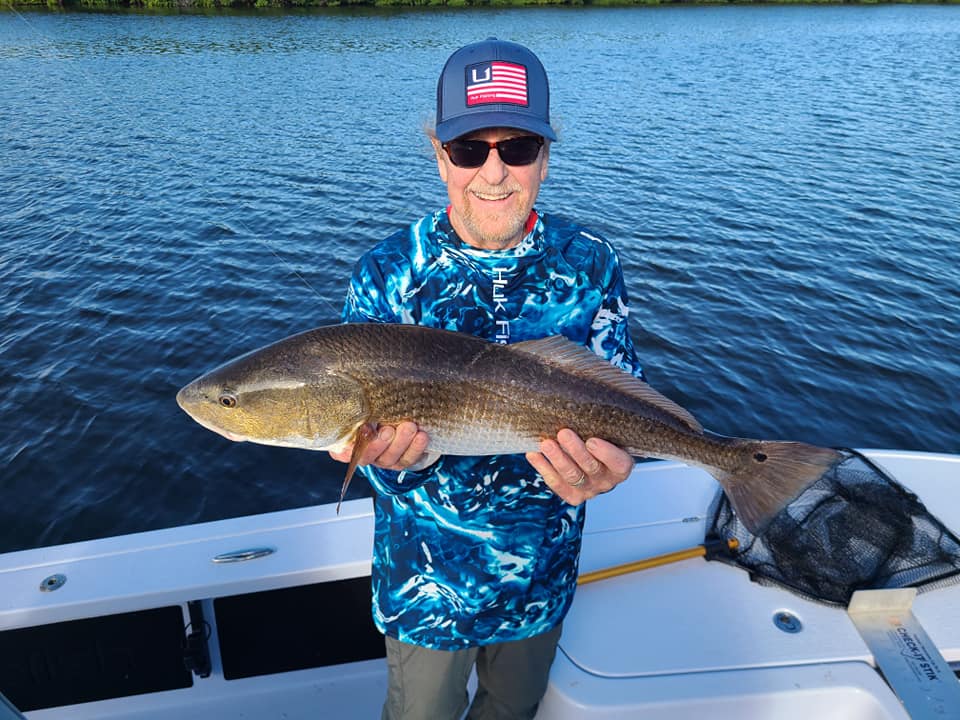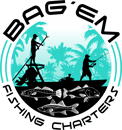Last Updated on January 9, 2025 by Eric
Fishing in Tampa Bay, Florida, offers an unparalleled inshore experience, blending scenic views, a thriving ecosystem, and year-round opportunities for fishermen. As the largest estuary in Florida, Tampa Bay boasts over 200 species of fish, thriving within its expansive 400 square miles of water. This unique mix of saltwater and freshwater habitats creates an unmatched environment for inshore fishing, drawing fishermen from all over the world. From its iconic mangrove-lined shores to the abundant grass flats teeming with life, Tampa Bay offers challenges and rewards that can only be found here. Planning a trip in the New Year provides not only the chance to target trophy fish but also to immerse yourself in one of Florida’s most diverse marine ecosystems. With Bag’em Charters and Captain Bucky at the helm, you’ll gain insider access to these waters, turning a simple fishing trip into an extraordinary adventure filled with local knowledge and expert guidance.
The Geography of Tampa Bay’s Inshore Waters
Tampa Bay is an estuary that covers over 400 square miles, making it the largest open-water estuary in Florida. Its intricate ecosystem is defined by the mixing of saltwater from the Gulf of Mexico and freshwater from over 100 rivers and streams, creating a vibrant habitat for diverse marine life. This unique combination of habitats supports more than 200 species of fish, offering unparalleled opportunities for inshore fishing.
The bay features a variety of fishing environments, including expansive grass flats teeming with baitfish, sturdy oyster beds that attract bottom feeders, and mangrove-lined edges that serve as nurseries for juvenile fish. Each of these areas offers distinct challenges and rewards for fishermen, requiring adaptable strategies to maximize success.
Tidal movement is crucial in shaping Tampa Bay’s fishing opportunities. Incoming tides flood the grass flats and mangroves, allowing fish to feed aggressively, while outgoing tides concentrate fish into deeper channels and potholes. Winter’s negative tides, in particular, reveal sandbars and force fish into predictable areas, making it easier to target species like redfish, trout, and black drum. By understanding these tidal patterns, fishermen can strategically position themselves for a productive day on the water.
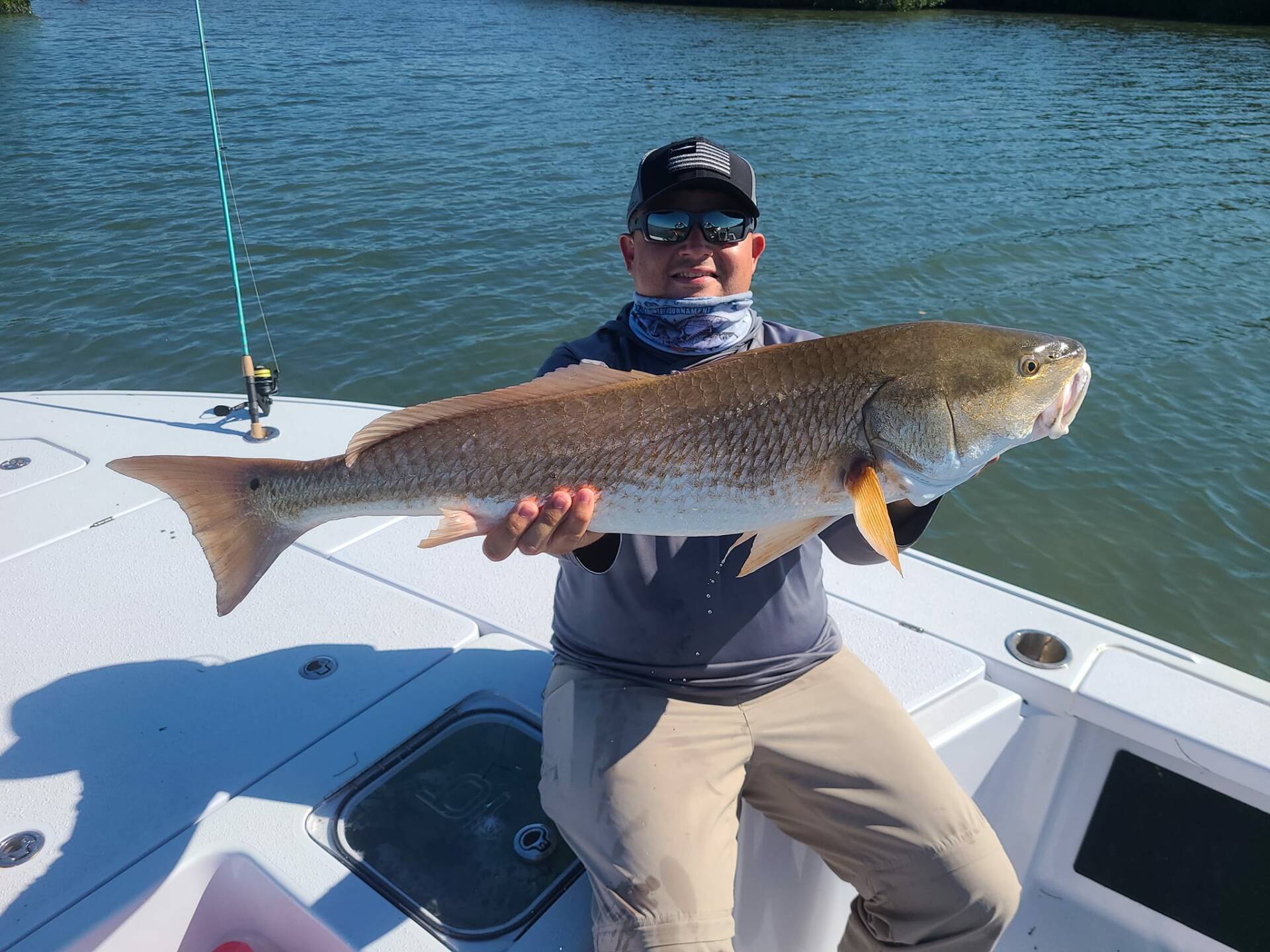
Seasonal Patterns and Winter Fishing in Tampa Bay
Winter fishing in Tampa Bay is marked by cooler water temperatures, which influence the behavior and location of inshore species. Many fish, such as redfish, snook, and trout, seek out the warmest water available, often congregating in shallow flats, near springs, or along sunlit mangrove edges. The New Year is an excellent time for targeting these species, as they tend to group together in predictable areas, making for productive fishing outings.
The reduced presence of baitfish during winter months leads many predatory fish to become opportunistic feeders. Fishermen who adapt by presenting live bait or slow-moving artificial lures can take advantage of this feeding behavior. Understanding these seasonal patterns is key to making the most of a Tampa Bay fishing trip.
Key Fish Species to Target in Tampa Bay
Tampa Bay offers an array of inshore fish species that make it a world-class fishing destination. Here’s a closer look at some of the top species fishermen can target with Bag’em Charters:
Redfish
Redfish are a staple of Tampa Bay’s inshore fishing scene. With their copper-bronze bodies and signature black spot near the tail, redfish are not only beautiful but also provide an exciting fight. During winter, they school in shallow flats and near oyster bars, especially during sunny afternoons when the water is warmest. Live shrimp, cut bait, and artificial lures like gold spoons or soft plastics are excellent options for targeting redfish.
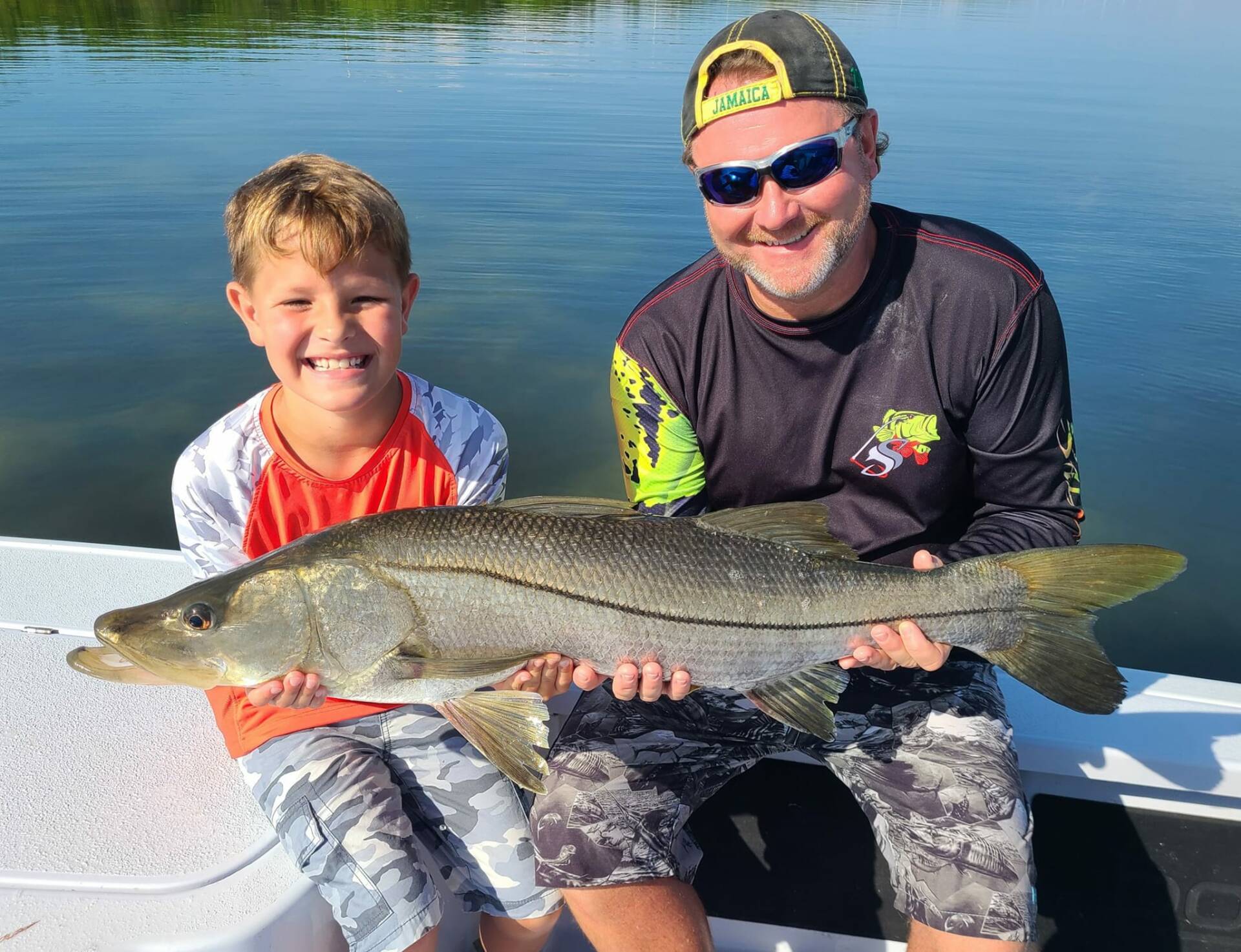
Snook
Snook are a prized species in Tampa Bay, known for their sleek, silver bodies and bold black lateral line. While snook are more active in warmer months, winter provides opportunities to target them in deeper channels, residential canals, and near warm water discharges. Live bait such as pilchards or shrimp is often the most effective, but soft plastics and jerkbaits can also entice these cautious fish.
Speckled Trout
Speckled trout are another winter favorite for inshore fishermen. These fish are identifiable by their silvery bodies with dark spots along their backs and fins. Trout are often found near grass flats, deep potholes, and channels where baitfish congregate. A slow retrieve with soft plastics, suspending twitch baits, or live shrimp under a popping cork can yield great results during the cooler months.
Sheepshead
Sheepshead are easy to recognize thanks to their black-and-white stripes and human-like teeth. These fish are typically found near structures such as dock pilings, rock piles, and oyster beds. Winter is prime time for sheepshead, as they gather in larger numbers to spawn. Fiddler crabs, barnacles, or shrimp on small hooks are the most effective baits for targeting this finicky species.
Flounder
Flounder, with their flat bodies and camouflage abilities, are often found along sandy bottoms and near structures. While not as common in the winter, they can still be targeted using live minnows or soft plastic jigs worked slowly along the bottom. Flounder are ambush predators, so patience and precise presentations are key.
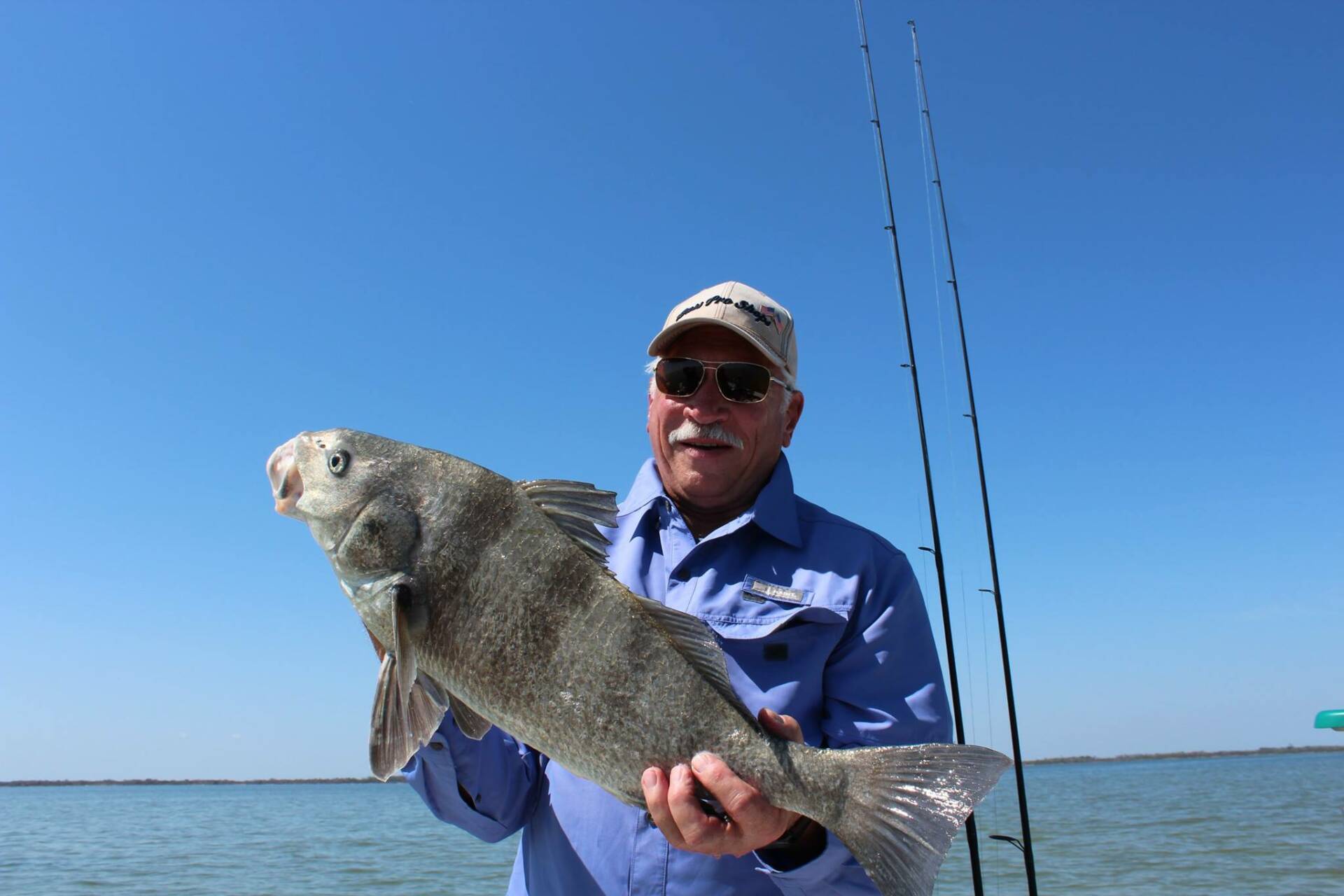
Black Drum
Black drum, known for their drumming sound and strong fight, are a popular winter target in Tampa Bay. These large fish often congregate near structures like bridges and deeper channels. Shrimp, cut crab, or clams are ideal baits for black drum, and fishermen targeting them should be prepared for a tough battle.
The Role of Tides and Weather
Understanding the tides is essential for inshore fishing success in Tampa Bay. Moving water during incoming or outgoing tides creates feeding opportunities for fish, as bait is stirred up and predators take advantage. Winter’s negative tides, in particular, expose fish-holding structures and force fish into deeper areas, making them easier to locate.
Weather also plays a significant role. Cold fronts can temporarily push fish into deeper water or more sheltered areas, but stable conditions following a front often lead to increased feeding activity. Fishermen should monitor weather forecasts and plan their trips around periods of stable conditions for the best results.
Techniques and Gear for Tampa Bay Inshore Fishing
Fishing in Tampa Bay requires gear and techniques tailored to the unique conditions of the area. Light to medium spinning rods paired with braided line are a versatile choice, offering both strength and sensitivity. Fluorocarbon leaders are often used to prevent abrasion when fishing near structure.
Both live bait and artificial lures are effective for targeting Tampa Bay’s inshore species. Live shrimp, pilchards, and cut bait are excellent choices, particularly in winter. Artificial options such as soft plastics, jerkbaits, and gold spoons provide versatility and allow fishermen to cover more water. Slower retrieves are often necessary during the cooler months to match the reduced activity levels of fish.

Navigating Tampa Bay’s Inshore Waters
Tampa Bay’s expansive waters can be challenging to navigate, particularly for those unfamiliar with the area. Shallow-draft boats are essential for accessing flats and creeks without running aground. GPS devices and updated navigation charts are invaluable for avoiding hazards such as sandbars and submerged structures.
Kayaks and paddleboards are also popular for inshore fishing in Tampa Bay, offering a quiet and environmentally friendly way to explore the shallows. Wading is another effective method, allowing fishermen to access productive areas and make precise presentations in close proximity to fish.
Environmental Stewardship
Tampa Bay is a vital ecosystem that supports a diverse range of marine life. Fishermen are encouraged to practice responsible techniques to preserve this unique environment. Using circle hooks for catch-and-release fishing minimizes injury to fish, and avoiding damage to seagrass beds and oyster bars is essential for maintaining habitat health.
Respecting wildlife, such as manatees and dolphins, is also important. Fishermen should give these creatures plenty of space and avoid disturbing their natural behaviors.
A Personalized Fishing Experience with Captain Bucky
Bag’em Charters, led by Captain Bucky, offers a truly personalized inshore fishing experience in Tampa Bay. With years of local knowledge and a passion for the water, Captain Bucky specializes in helping fishermen of all skill levels enjoy productive and memorable outings. Whether you’re targeting redfish, snook, trout, or any of Tampa Bay’s other incredible species, Captain Bucky’s expertise ensures a safe and enjoyable adventure.
If you’re ready to experience the best inshore fishing Tampa Bay has to offer, book your trip today with Bag’em Charters. Captain Bucky is dedicated to providing an exceptional fishing experience tailored to your goals and preferences. Don’t miss the chance to explore Tampa Bay’s rich waters and create lasting memories on the water. Reserve your adventure now and see why fishing with Bag’em Charters is an experience you’ll never forget!

